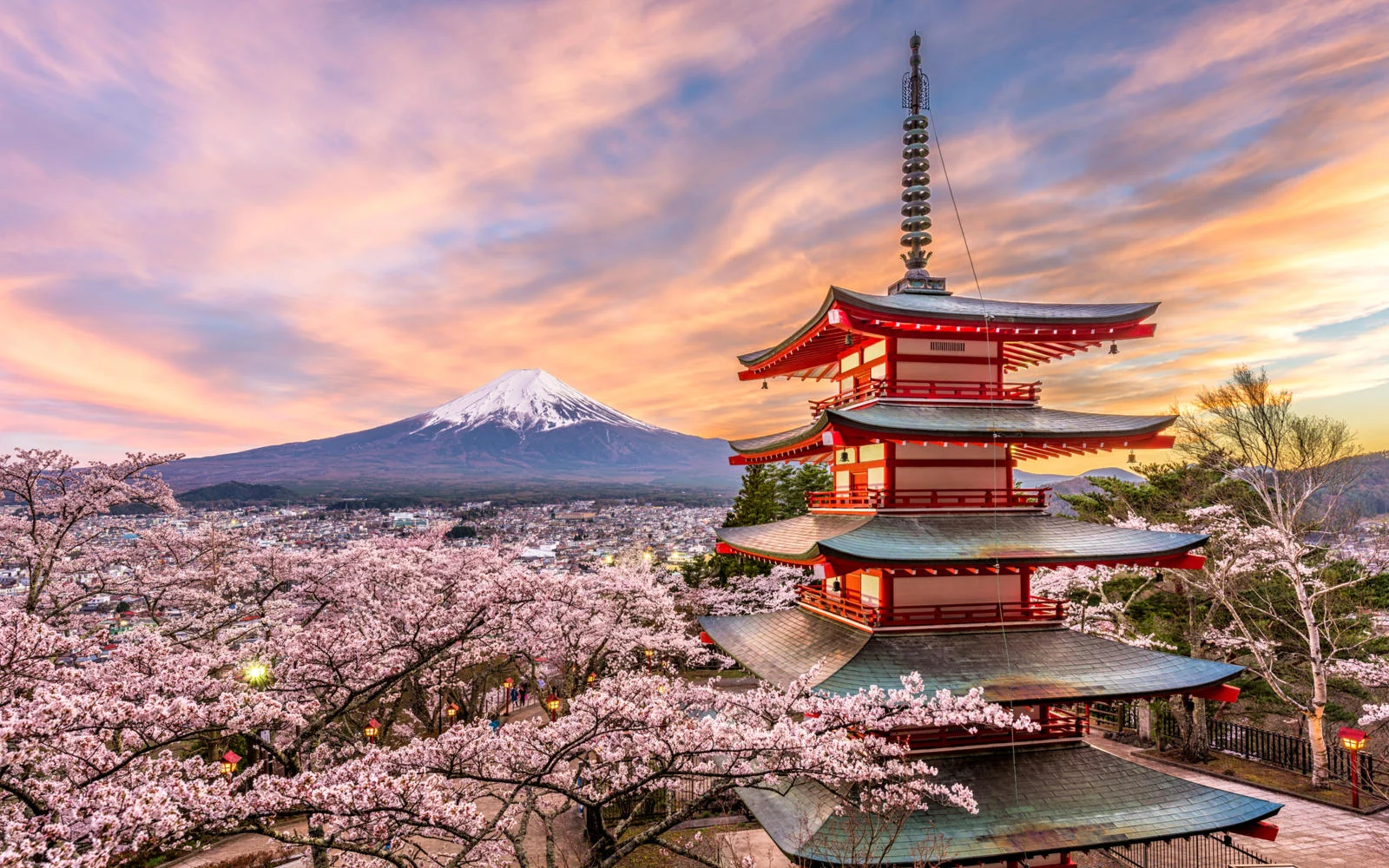Japan is a densely packed country for visitors and tourism. There’s everything from beaches and cities to gardens and mountain trails, often found within minutes of each other. Here are some of the best places to visit in Japan, from parks to cities to historical sights; we’ve found something for everyone!
The 19 Best Places to Visit in Japan in 2026
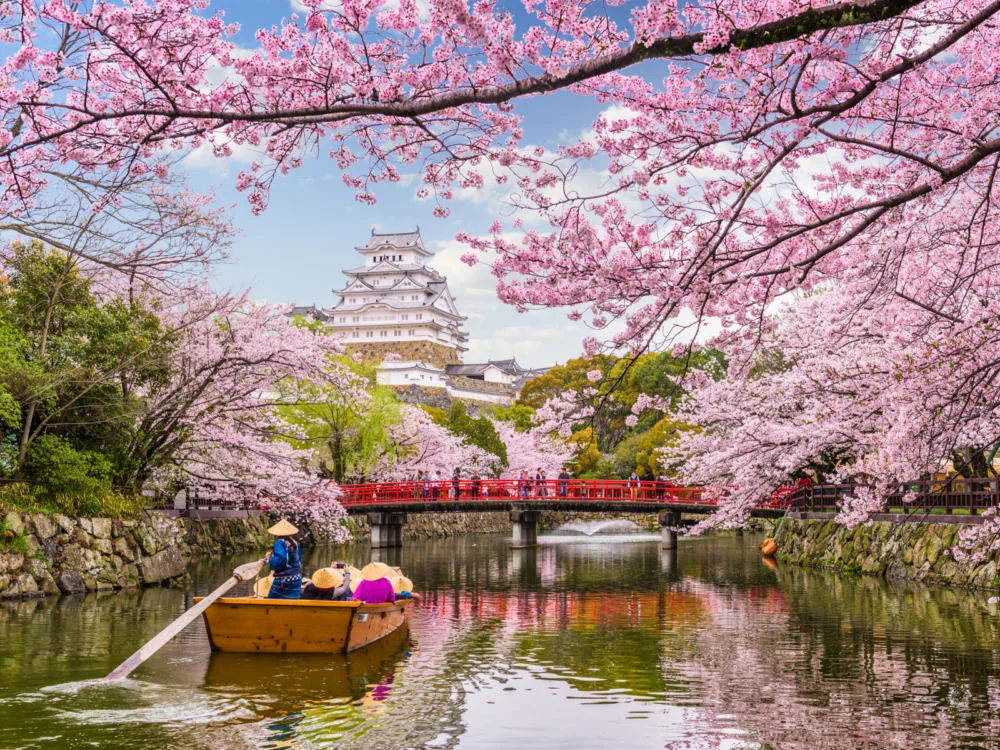
Sean Pavone/Shutterstock
Japan has countless places worth visiting, regardless of your interests. No guide could cover them all because there are just too many! Below, we’ll look at some of the best, including:
- Natural sites
- Cultural hubs
- Historical destinations
- Religious sites
Many people who visit Japan land somewhere around Tokyo, but if you want to optimize your trip, consider landing near the northern island (Hokkaido) or the southern one (Kyushu).
From there, you can take Japan’s railway up or down the coast and visit each location in order. If you’re planning to travel alone, we highly consider joining a tour group, as it’ll provide more structure to your trip and extra help if you run into any trouble along the way.
In any case, we’ve found the best places to visit in Japan to help you determine which way you’ll want to go. Let’s dive in!
1. Mount Fuji
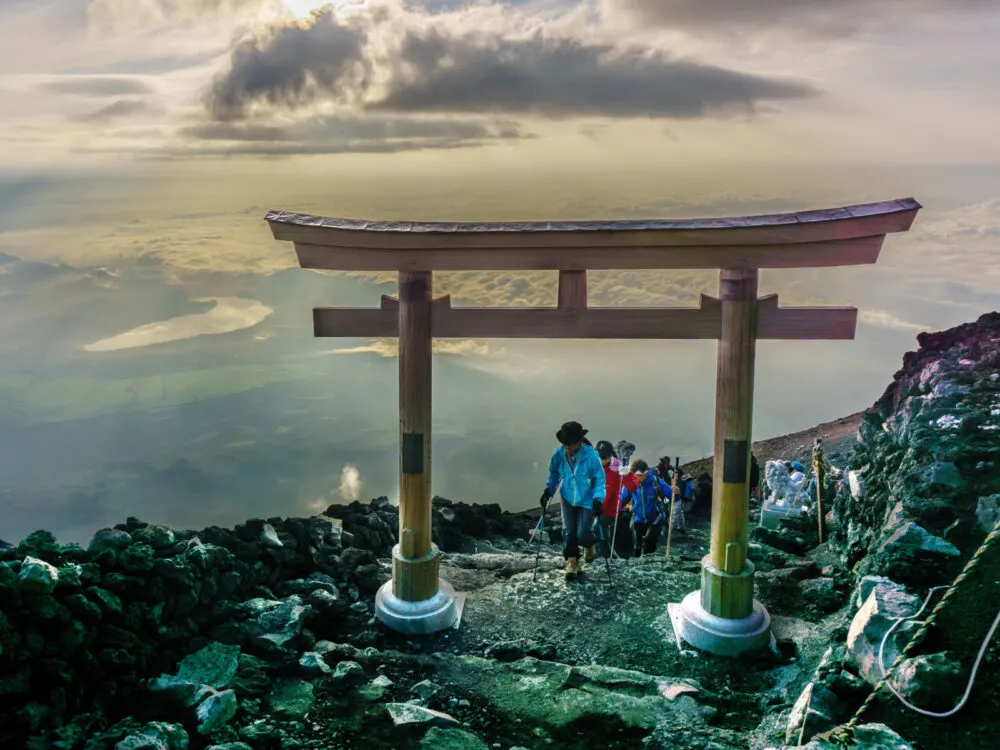
Madsolar/Shutterstock
The most iconic mountain in Japan, Mount Fuji is a popular summer destination for mountain climbing and is easily accessible from most of the country. While full climbs are possible, most people start from a station halfway up, giving a more leisurely trip.
Sleeping sites are available on the mountain too. So it’s possible to spend the night there and see a sunrise from the peak.
Even if you’re not interested in the iconic mountain peak, Mount Fuji is part of the larger Fuji-Hakone-Izu National Park, which has plenty of other activities to enjoy.
2. Oirase Gorge
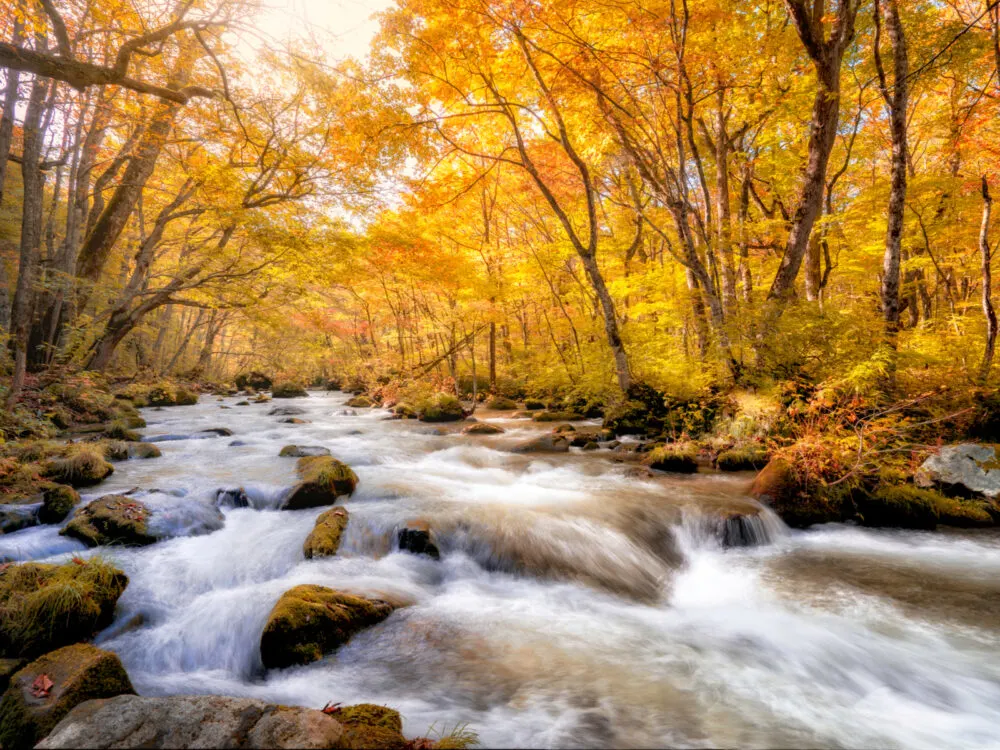
patchiya wasitworapol/Shutterstock
Found close to the northern tip of Japan’s main island, Oirase Gorge is about 14 kilometers of hiking or biking along a gentle trail. The stream flows well throughout the year, cascading over numerous waterfalls and passing through a dense, unspoiled forest.
Oirase Gorge is beautiful throughout the year, although winter is an excellent time to visit because you may catch sight of frozen waterfalls. Spring and summer are vibrant and green along the trail, giving an almost meditation-like experience as you walk.
3. Nara
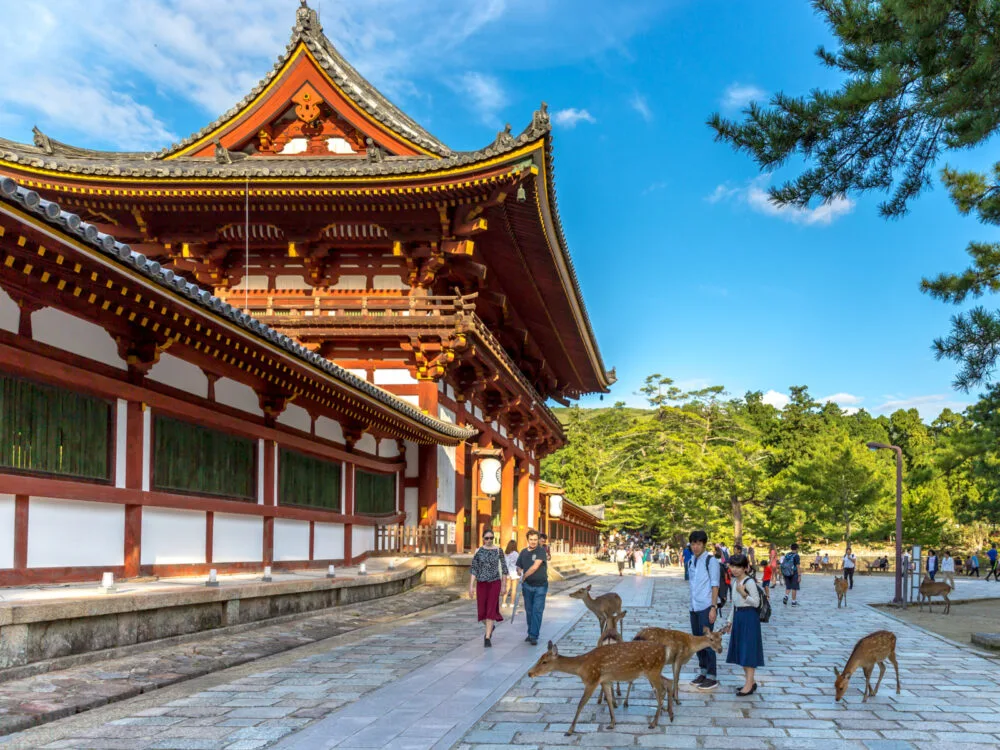
LMspencer/Shutterstock
The original capital of Japan, Nara is a historic city that is chock-full of UNESCO World Heritage sites. The area around Nara Park is particularly dense with them, while the park’s interior has friendly deer that will come up and eat out of your hands.
Todaiji Temple is worth visiting and contains one of the largest wooden structures in the world. It also hosts toe Daibutsu, a 15-meter tall statue of the Buddha made from over 400 tons of bronze.
Todaiji is one of the most notable temples in Japan and well worth spending a few hours exploring. If you prefer spending time outdoors, stop by the Kasugataisha Shrine Man’yo Botanical Garden, which features about 250 different plants.
The garden is best between May and June but gorgeous throughout the year, and it’s old enough to appear in ancient Japanese poetry collections.
4. Kinosaki
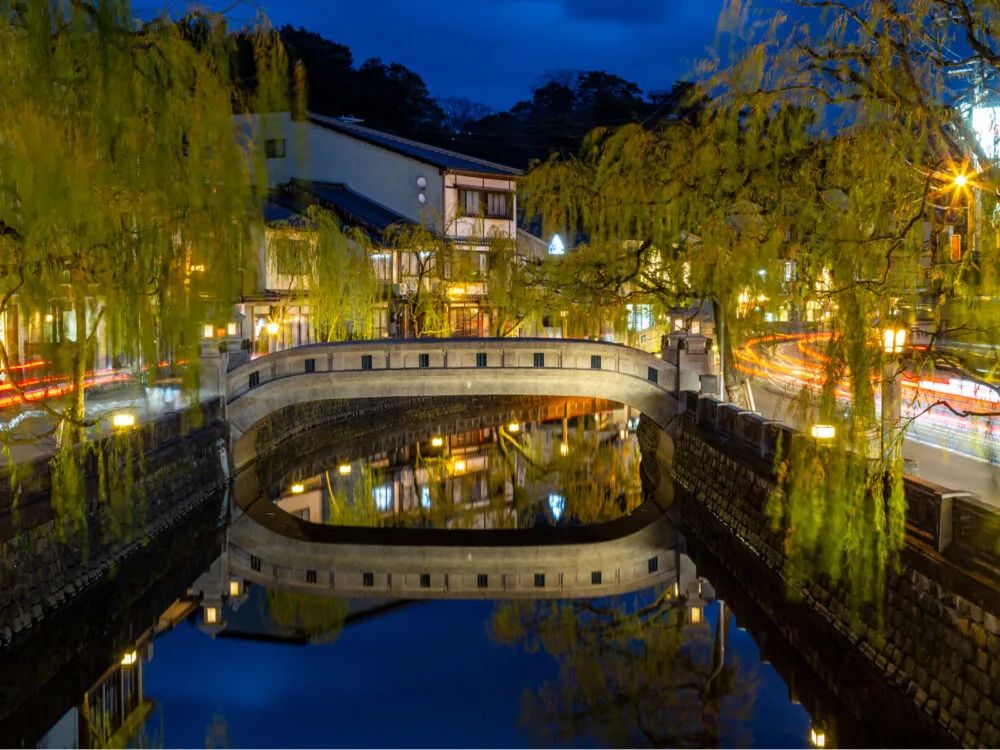
Extarz/Shutterstock
Japan is full of art and entertainment. But if there’s one activity you should try to enjoy no matter what, it’s visiting a traditional hot spring hotel, known as an onsen. For this purpose, few destinations are better than Kinosaki.
Kinosaki is a dedicated hot spring town about two and a half hours by train from Kyoto. There are many luxury hotels in Kinosaki, but there are loads of other exciting activities, like making delicious soba noodles or crafting with willow.
Kinosaki doesn’t avoid technology, exactly, but it’s a quiet and relaxing destination for people who want to unplug for a while. Make sure to plan ahead, as many of the best experiences in Kinosaki require reservations at least five to seven days before your visit.
5. Kyoto
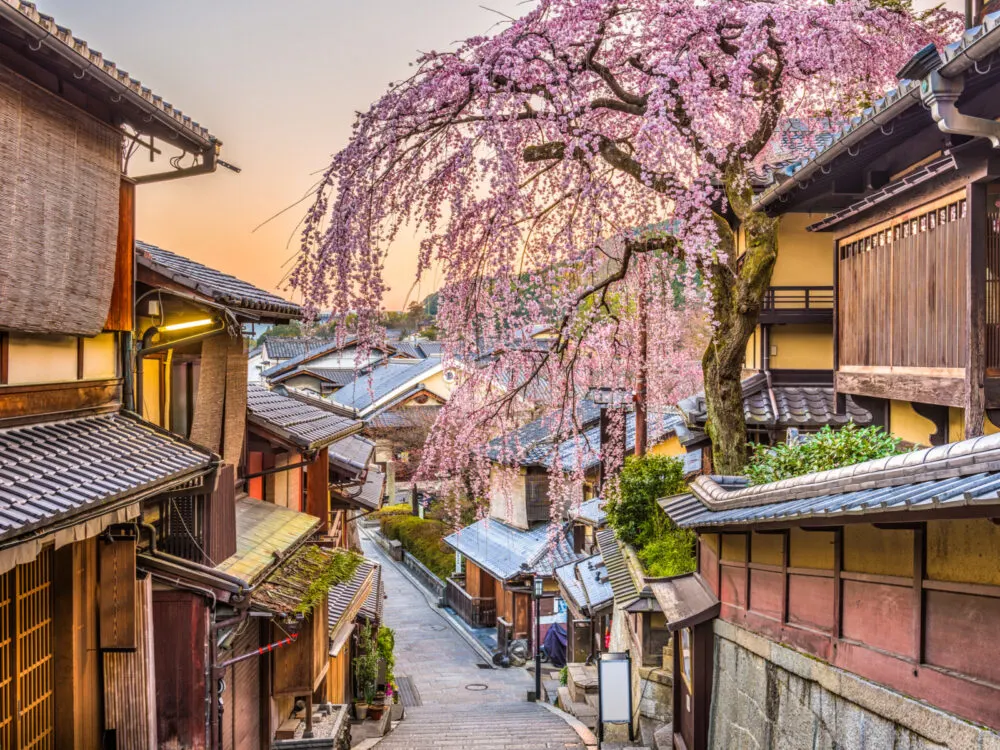
Sean Pavone/Shutterstock
Few places in Japan are quite as iconic as Kyoto, once the nation’s capital. We could fill this entire guide with landmarks in this city! There’s just that much on offer.
It’s definitely worth stopping by the recently renovated Kiyomizu-Dera, an iconic temple that’s been operating for over 1200 years in the same place.
If you’re not sure where to stay, consider a reservation at Hiiragiya Ryokan, a traditional inn near the very center of the city. Its calm, serene style and hundreds of years of history make it a peaceful spot to rest.
Kinkaku-Ji, more popularly known as the Golden Pavilion, is a three-story temple. The temple’s upper two floors are decorated in gold leaf for a striking visual against the greener background.
Originally a retirement villa for Japan’s shogun (military commander in chief and functionally the real ruler of the country), it was later converted into a Buddhist temple.
Finally, make sure you don’t miss the Kyoto Imperial Palace, the longtime residence of Japan’s imperial family before their eventual move to Tokyo. Most of the grounds are open to visitors, though some areas of the buildings are locked off.
Read Next: Is It Safe to Visit Kyoto in 2026 & Best Time to Go to Kyoto
6. Miyajima
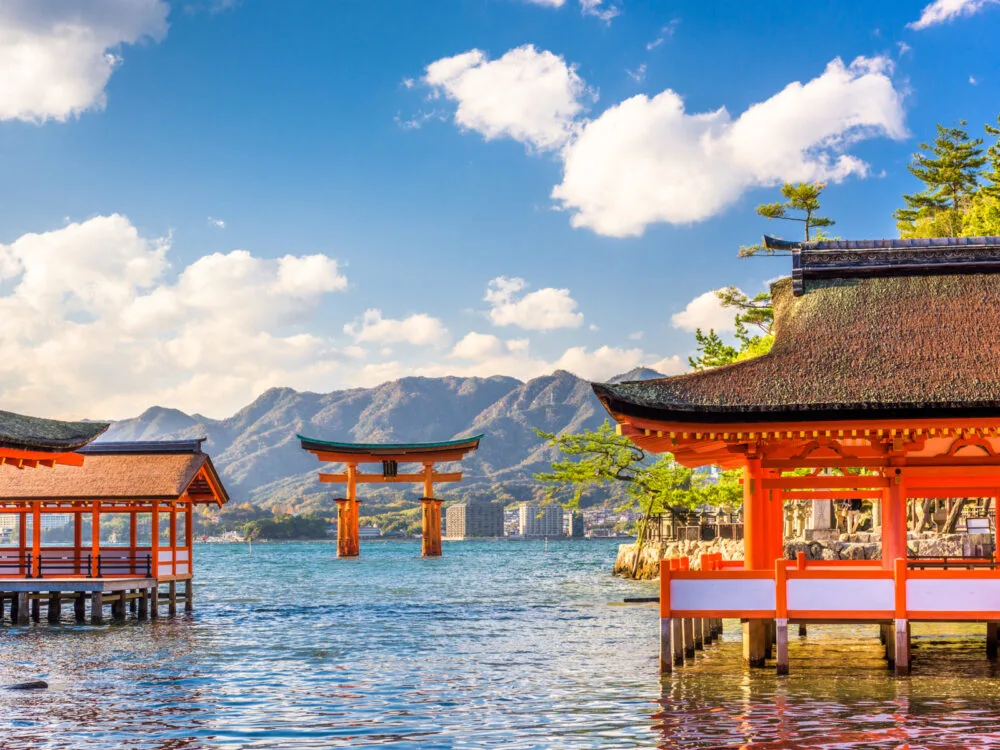
Sean Pavone/Shutterstock
Less a heritage site and more a heritage island, Miyajima (also known more formally as Itsukushima) is easily found thanks to the enormous shrine gate built on the water. The so-called Shrine Island has an unusually high number of major temples on it but is otherwise quiet and peaceful.
Itsukushima Shrine is particularly worthwhile, hosting a five-floor red pagoda and buildings set directly on the water. Miyajima’s Treasure Hall is also worth visiting, hosting about 4000 different items as part of a larger museum area.
7. Osaka Castle
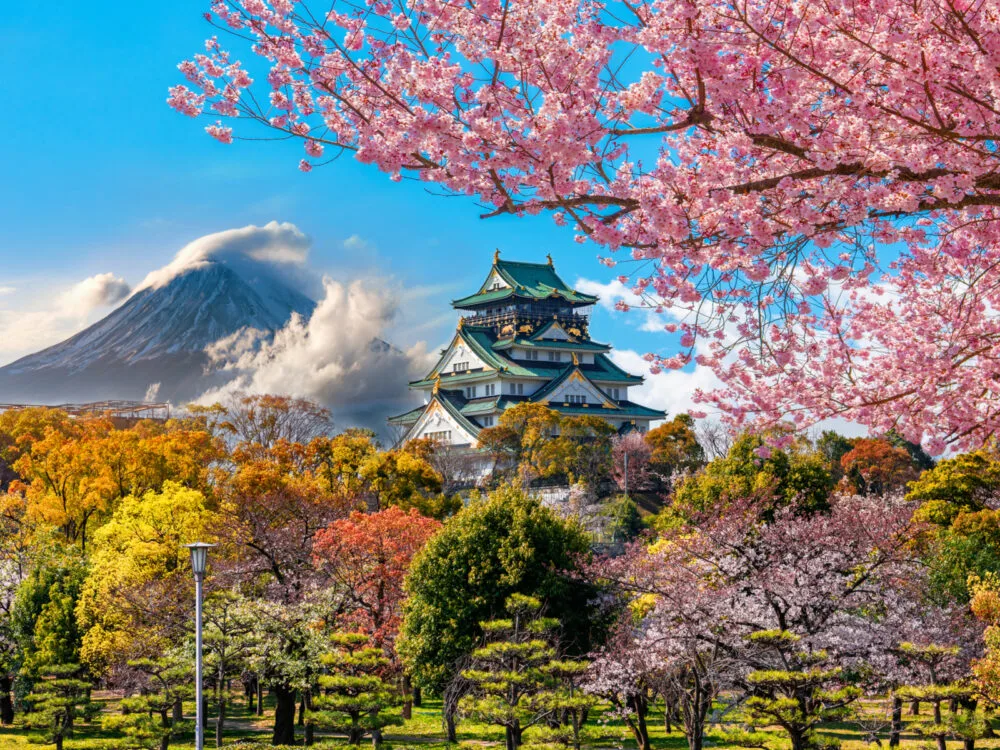
Chanchai Duangdoosan/Shutterstock
Osaka is a worthwhile city to visit in its own right, but Osaka Castle is a particularly notable landmark with cheap admission anytime, except around New Year’s Day. The exterior of Osaka Castle is an excellent representation of classic fortress architecture in Japan.
Unfortunately, the original wooden area was destroyed soon after being built. The modern version of the castle dates back to 1931 when modern materials helped create a sturdier central area for visitors to enjoy.
The inside is far more modern than many other castles throughout Japan, with an elevator that helps ensure accessibility for all guests.
While you’re in the area, consider going through the attached Nishinomaru Garden area. The garden requires a small fee but has hundreds of cherry trees and some additional structures.
8. Fukuoka
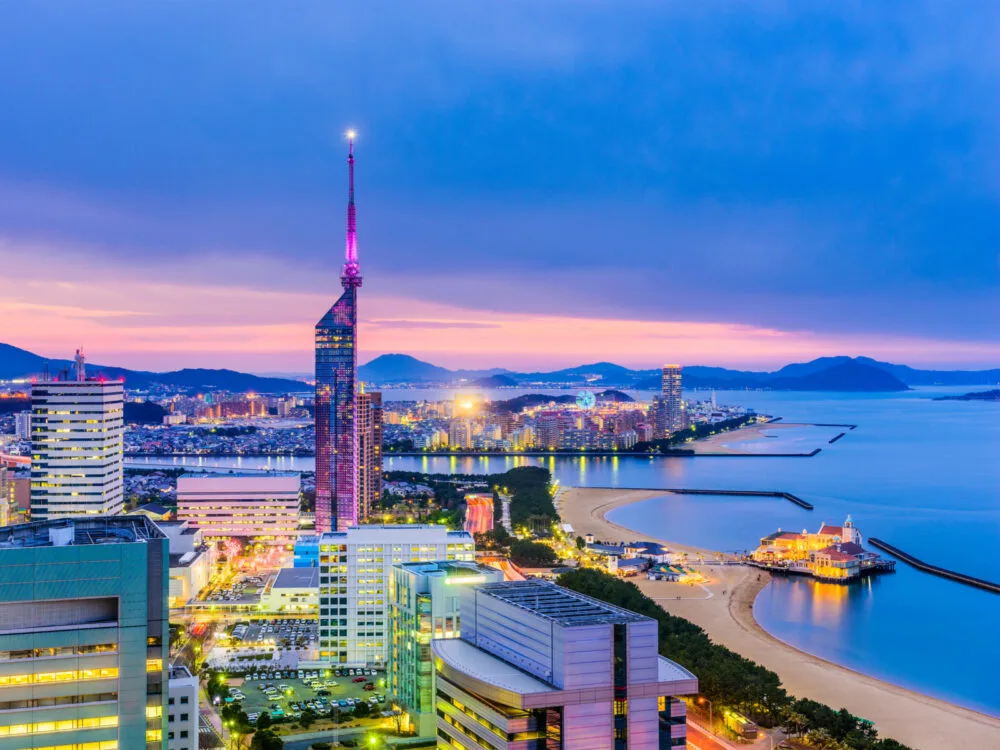
Sean Pavone/Shutterstock
Fukuoka is a major city set on the northern section of Kyushu Island, the southernmost of Japan’s four main islands. It also holds the distinction of being the area closest to the mainland, which makes it one of the longest continually-settled areas in the country.
Fukuoka has an upbeat but relaxed feeling to it, benefitting from mild weather much of the year.
The city is supported by a major port that brings in people and products alike. Fukuoka is a fantastic choice if you’re interested in food, as it’s one of the culinary capitals of the country!
9. Kobe
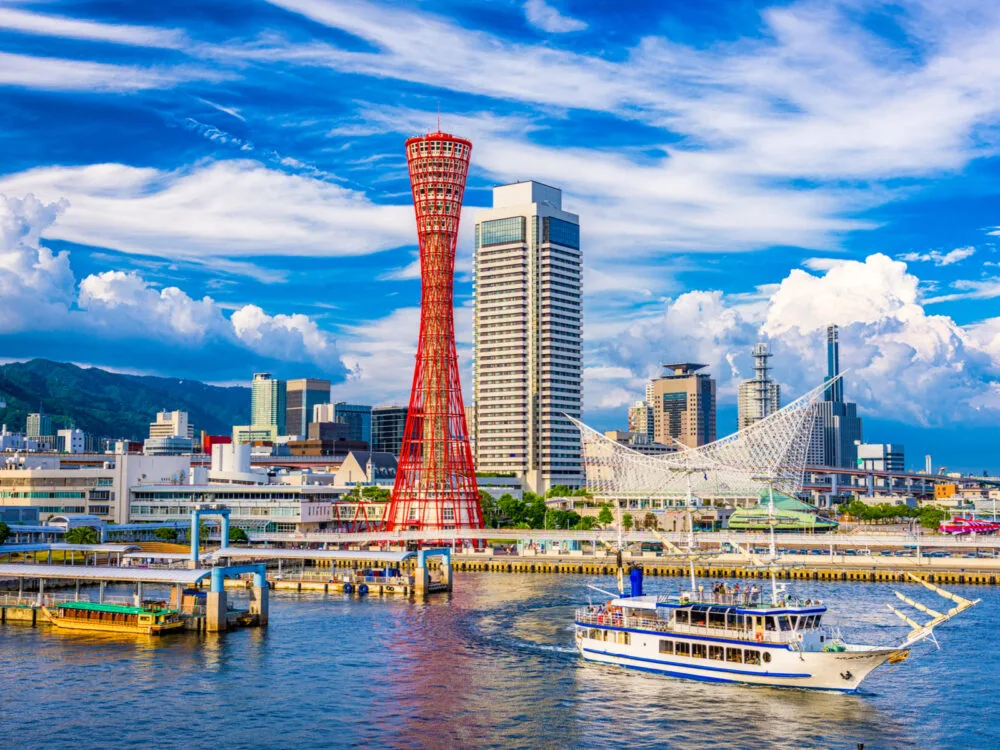
Sean Pavone/Shutterstock
Kobe has a lot of traditional entertainment, but there’s one aspect that stands out more than anything else: the beef. Kobe beef is famous not just in Japan but around the world, and with good reason!
The iconic beef comes from a specific breed of cattle raised in the area, following extraordinarily strict quality control standards.
Chefs in the area are happy to prepare food to your request, but if you want the best experience, leave it up to them. Kobe beef is expensive, so budget accordingly if you want to experience these flavors.
10. Atsuta Shrine
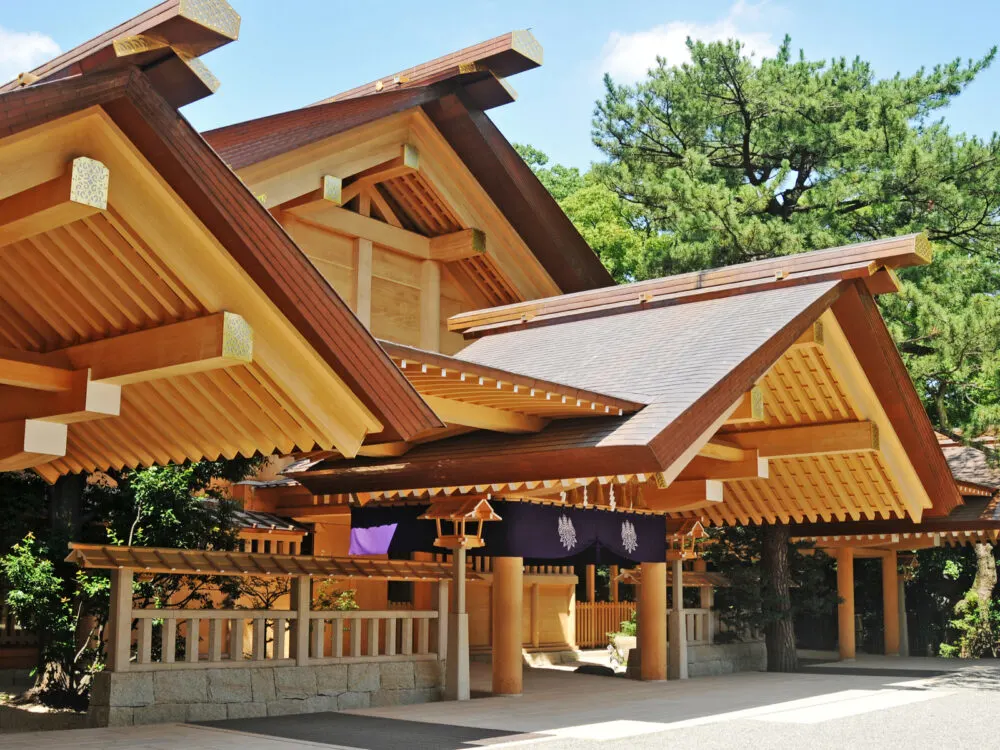
mTaira/Shutterstock
Set in the Nagoya area, Atsuta Shrine is one of the most important places in Japan’s native Shinto faith. Almost two thousand years old, this shrine has been rebuilt several times and supported by numerous generations of Japan’s leaders.
It’s particularly distinctive for holding the Kusanagi-no-tsurugi, a sword that’s one of the Imperial Regalia of the Japanese royal family. The Atsuta Jingu Museum, also on the property, has several thousand articles from a complete cross-section of Japan’s classes.
It has an unusually high number of weapons thanks to the shrine holding the Imperial Family’s sword, but it also has numerous other cultural works. Together, these make Atsuta Shrine the host of one of the best collections in Japan.
11. Ise Jingu
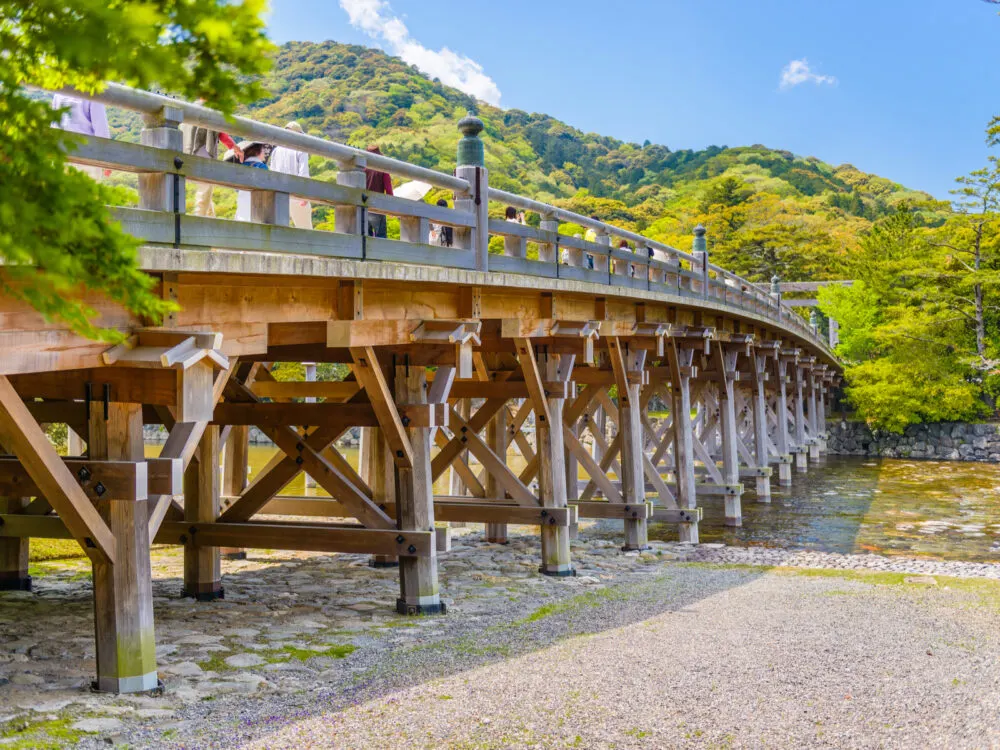
Sean Pavone/Shutterstock
Ise Jingu, or the Ise Grand Shrine, is perhaps the single greatest shrine in the country. The overall facility has over 120 Shinto shrines spread across grounds roughly the size of the center of Paris.
The shrine conducts over 1500 rituals each year. Parts of the shrine are always quite new. Ise Jingu has a tradition known as Shikinen Sengu, which occurs every 20 years to transfer sacred elements to a new palace.
The entire process takes about eight years total with all of the rituals, ensuring the primary holy shrine is always new.
It’s said that Ise Jingu holds the Sacred Mirror (another of the Imperial Regalia of Japan, alongside the Kusanagi-no-tsurugi at Atsuta Shrine). Public access is strictly limited and generally only available to the high priest or priestess, who must come from the Japanese imperial family.
12. Sapporo
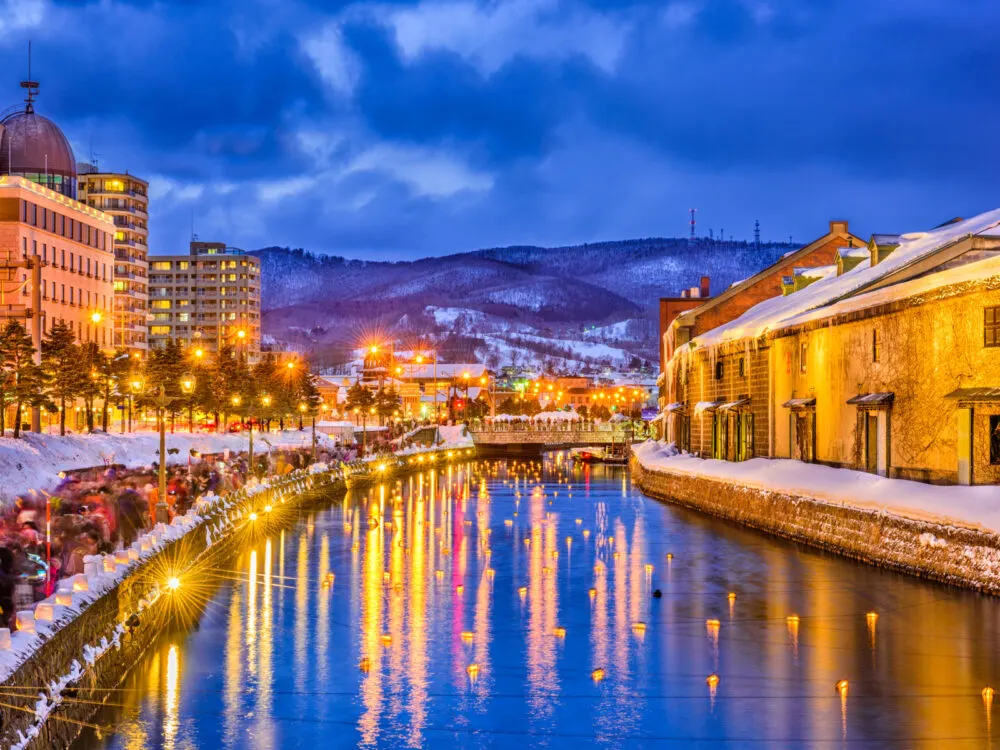
Sean Pavone/Shutterstock
Sapporo is something of a mirror to Fukuoka, and a worthwhile visit in its own right. Set on Hokkaido, Japan’s snowy northern island, Sapporo is a cultural and tourism capital that makes for a great visit throughout the year.
Sights and notable features of the city include:
- Nakajima Park’s huge pond
- Horseback riding
- Various fresh seafood dishes
- Beer production
The best time to visit is in winter when Siberian air dumps almost six meters of snow across the region. The annual Sapporo Snow Festival makes full use of the high-quality powder and allows for entertainment ranging from skiing and tubing to constructing huge snow castles.
13. Akihabara
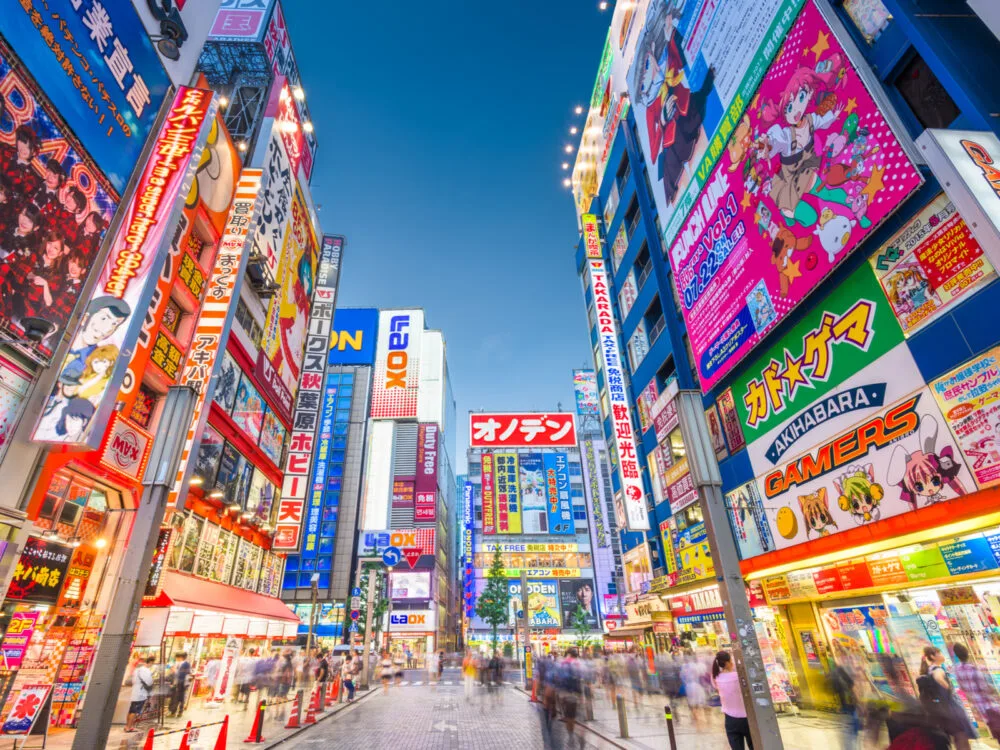
Sean Pavone/Shutterstock
Originally known as Japan’s Electric Town, Akihabara, or just Akiba, is the area set around the train station of the same name in Tokyo’s Chiyoda ward.
While most of the other areas on this list focus on historical and natural sites, Akihabara goes all the way in the other direction with its focus on popular culture and entertainment. Akihabara is a cultural and artistic hub.
The town is the place to go if you enjoy:
- Manga
- Japanese animated television series
- Music
- Video games
- Books
However, less obviously, there’s a different reason to visit: the food. For local fans of Japanese pop culture, heading to Akiba is usually an all-day immersive experience that involves being surrounded by all your favorite things.
People are in the area for so long that food becomes important, so there are plenty of restaurants, offering a wide range of good meals at budget-friendly prices.
Good food is available throughout Japan, but few places have quite the same concentration or variety as Akiba. Ultimately, that means this particular stop pulls double-duty for visitors.
14. Hakone
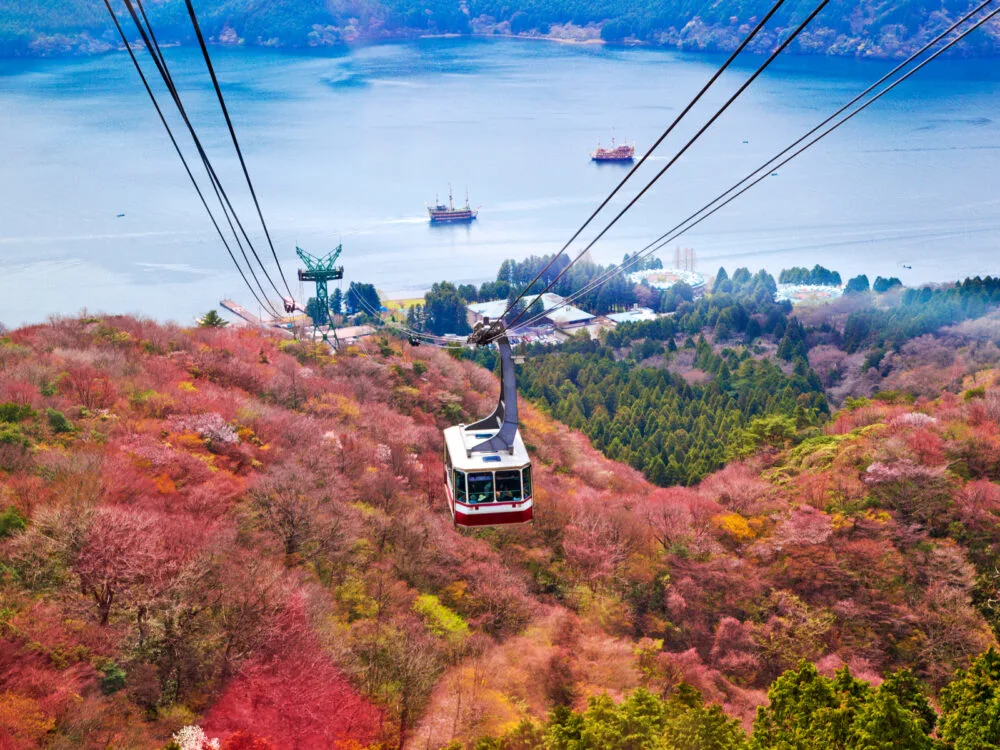
Tanya Jones/Shutterstock
Set a little west of Tokyo and close to Mount Fuji, Hakone is a relatively quiet and peaceful area. The area makes for a good stop if Tokyo itself is a little too busy for you. Hakone has numerous hot springs and traditional inns.
If you’re interested in art, Hakone is also home to numerous high-quality art galleries. The best time to visit Hakone is in the middle of the week.
It can get busier on the weekends when residents of Tokyo stop by to unwind. You can always head towards Fuji-Hakone-Izu National Park if you want to avoid the crowds.
15. Fushimi Inari Taisha
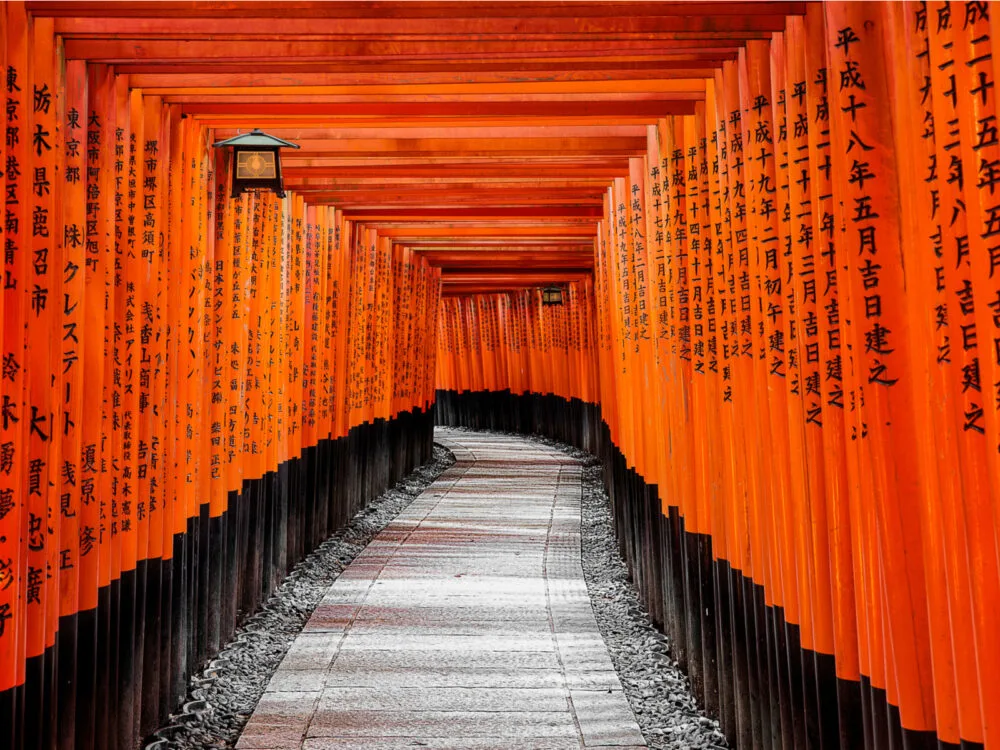
Dr_Flash/Shutterstock
Distinct enough to deserve its own entry and separate from the rest of Kyoto, Fushimi Inari Taisha is the head shrine for the temples to Inari, the Shinto deity of rice.
As you might expect from Japan’s culinary traditions, the god of rice is especially important to the people of the country. This shrine is famous for its high number of red gates known as torii. Toriis decorate the passage between the normal physical realm and the spiritual realm.
Fushimi Inari Taisha has about ten thousand of these gates. Most of these gates are along the main path up to the temple. Walking through this passage is an astounding experience and worth the trip.
16. Ishigaki
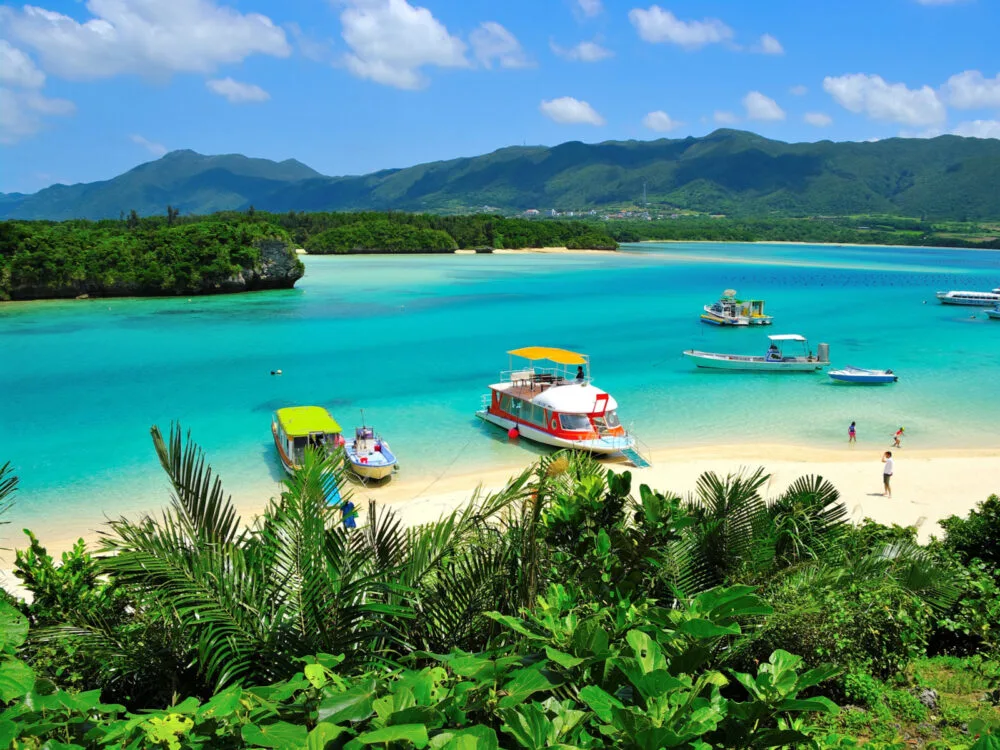
Shikema/Shutterstock
If you’re looking for sun, sand, and surf, the best place in Japan is likely Ishigaki island. This area is popular enough to have support for visitors but not quite as crowded as areas like Okinawa.
Ishigaki offers:
- Hotels at various price points
- Gorgeous natural beaches
- Several local festivals
If possible, try to visit the sparkling Kabira Bay area. Kabira Bay is one of the few places in the world where you can find natural black pearls. Yonehara Beach also has an accessible coral reef, while a local awamori distillery provides an alternative to the more famous Japanese alcohol, sake.
Less obviously, Ishigaki is a great place to visit if you love astronomy. The island has an observatory open to the public, functioning as part of a four-unit interlinked radio telescope system.
17. Shinjuku Gyoen National Park
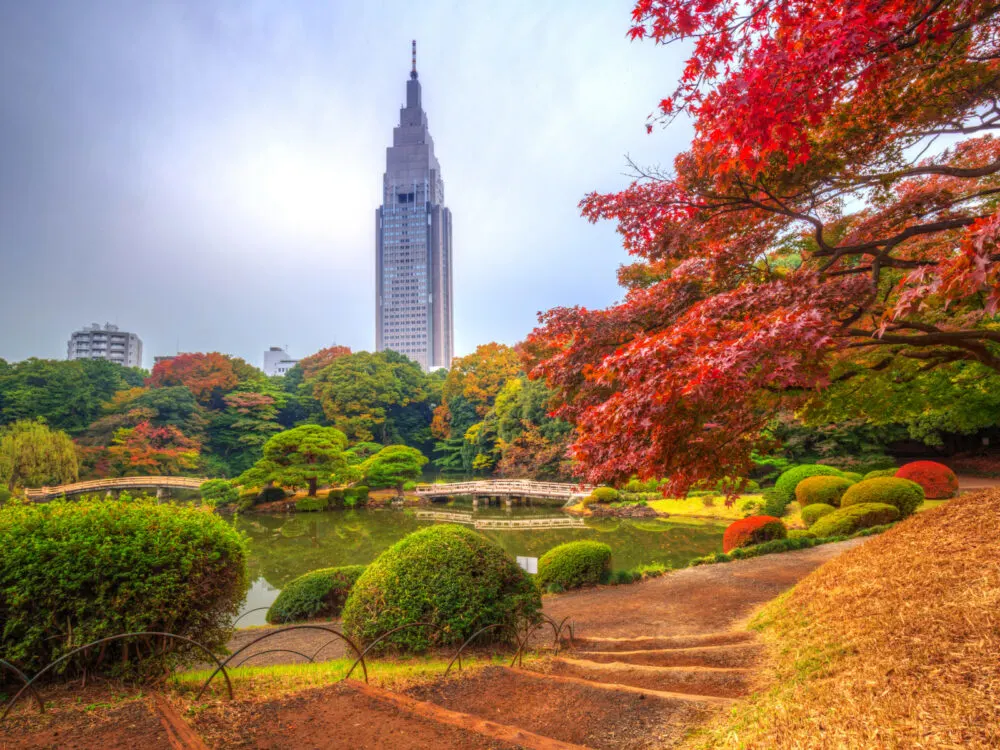
Patryk Kosmider/Shutterstock
Shinjuku Gyoen is one of the biggest National Parks in Tokyo, an otherwise heavily-urbanized city. Originally the residence of a feudal lord, it moved into the hands of the Imperial Family, who opened it to the public after reconstruction following World War II.
Aside from its sheer size, Shinjuku Gyoen is notable for having three major design styles throughout.
While the Japanese garden is expected, the English and French sections are outstanding examples of their respective styles. An on-site greenhouse provides viewing for flowers that prefer warmer weather.
18. Ueno Zoological Gardens
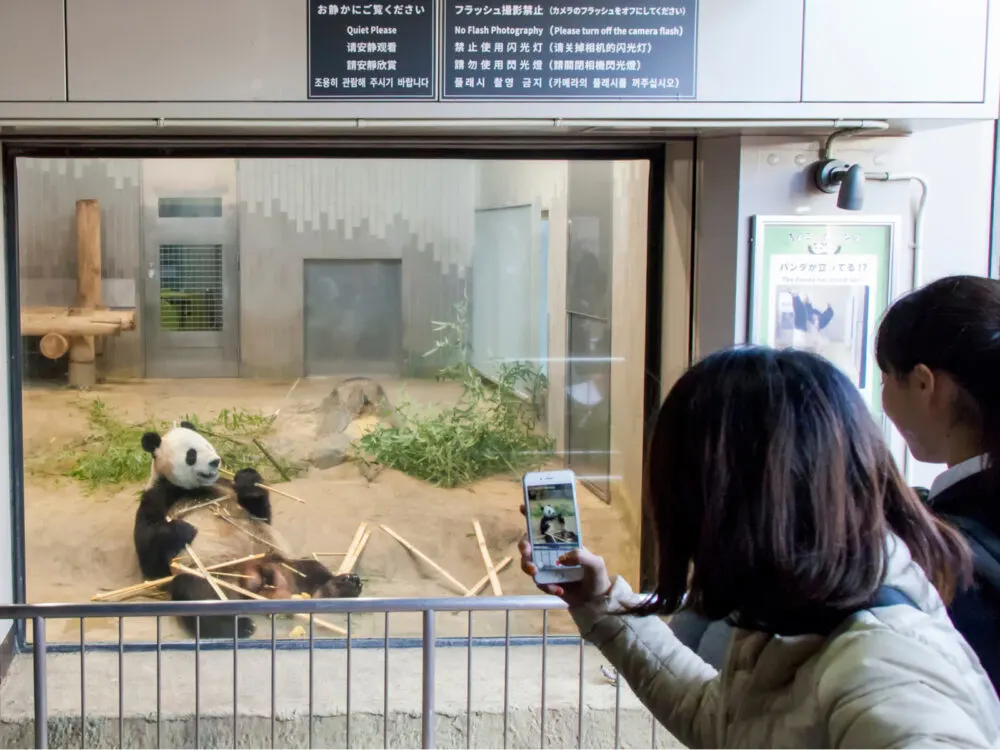
Aija Lehtonen/Shutterstock
Ueno Zoo is one of the oldest zoos in Japan, operating continuously since 1882 and covering about 35 acres of space. Today, Ueno Zoo has more than 400 different species, including some rare sights like giant pandas.
Ueno Zoo actively engages in breeding programs to help protect and repopulate endangered species, making it a destination where your entry fee helps protect and support animals. The larger zoo area also has a five-story pagoda, offering another way to experience traditional Japanese culture.
19. Ginza
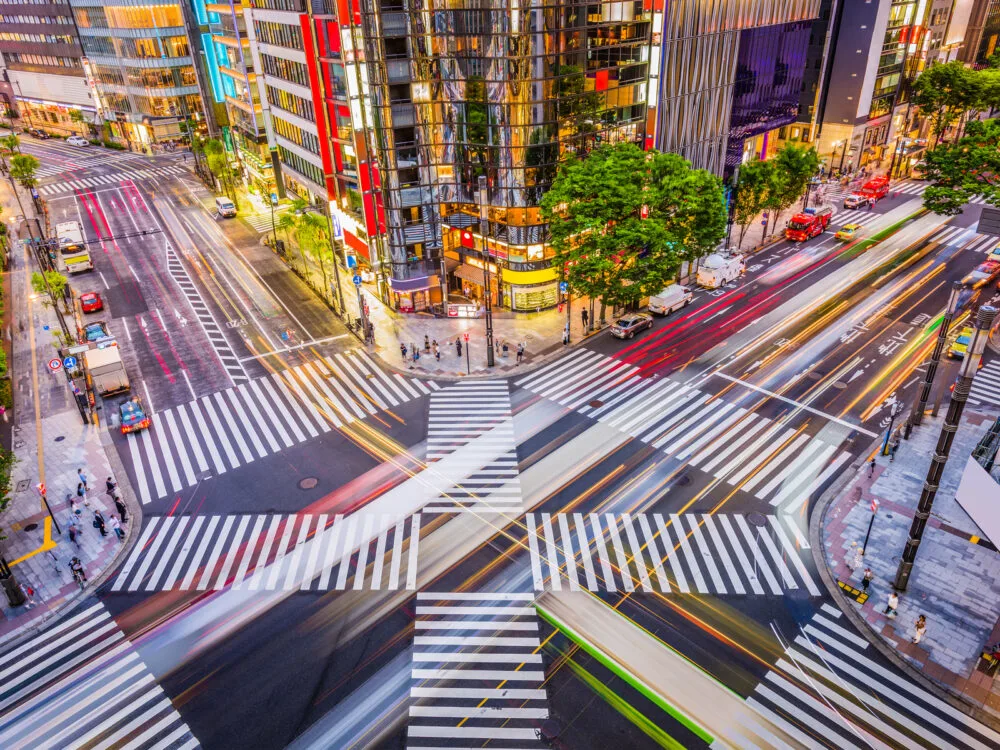
Sean Pavone/Shutterstock
If you’re into shopping, it’s hard to beat Ginza. Built where the roads connecting five of Japan’s oldest major cities meet, Ginza is essentially the commercial center of Japan and a great spot to find high-quality products.
It has some of the most expensive real estate in the country, with a single square meter worth over ten million yen (about $100,000).
In other words, consider going somewhere else if you’re on a tight budget! Otherwise, Ginza is a pedestrian-friendly location full of theaters, delicious food, and plenty of other entertainment.
Frequently Asked Questions
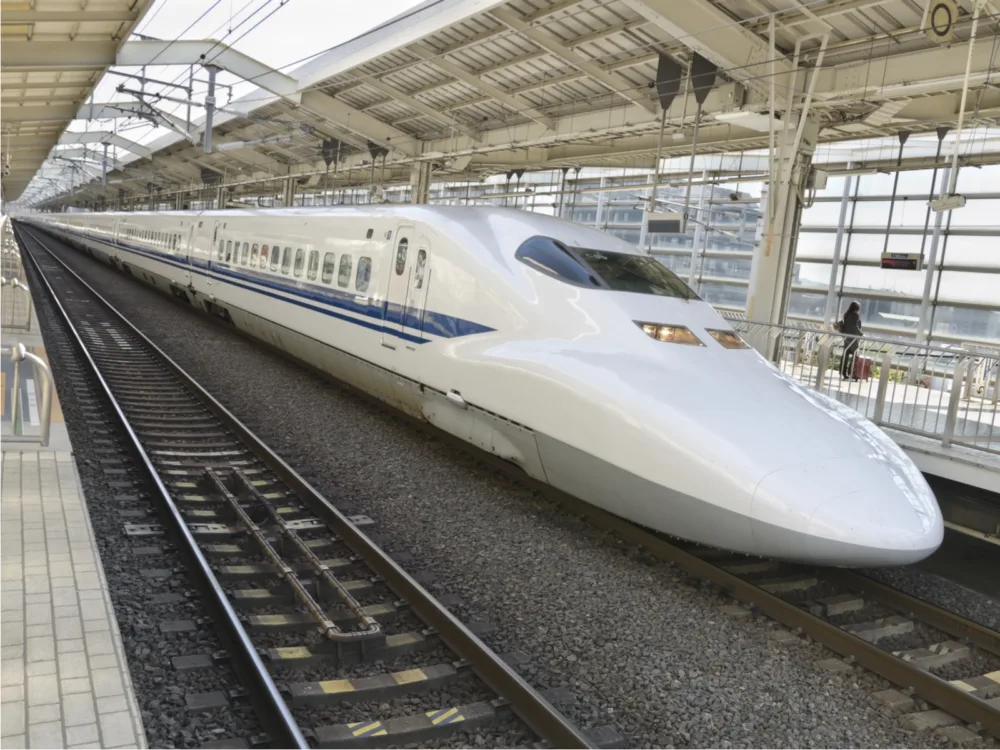
Leon Rafael/Shutterstock
Here are some common questions people have about the best places to visit in Japan.
What is the prettiest place to visit in Japan?
Japan has countless gorgeous destinations, so it’s hard to pick a single place to go. However, Osaka Castle is particularly impressive. The castle offers an outstanding garden next to some classic architecture.
Is one week enough time to visit Japan?
You could easily spend months seeing everything in Japan, but one week is enough if you have a good travel plan. Consider limiting your trip to one or two cities if you want to take more time to enjoy each sight.
What is the best month to visit Japan?
The best months to visit Japan are in Spring or Fall when the trees have their best colors. If you’re focusing on urban areas rather than natural sights, any time of year will work.
How much money should I bring to Japan?
A single tourist will usually spend between $35 and $200 per day. There are plenty of budget-friendly options for traveling to Japan if you know where to look, and as long as you have access to public transit, you can get practically anywhere you want to go with minimal delays.
So, What’s Best Place to Visit in Japan?
The best place to visit in Japan depends on what you want to see. From nature parks and hiking trails to ultra-modern urban living, Japan has entertainment for people of all ages and interest groups.
If you want a single destination, though, it has to be Tokyo. The heart of Japan has everything, and you can easily spend your entire trip there. Happy travels!



